CI Settings
Settings for close interval surveys can be set through ![]() Settings. These settings include the following:
Settings. These settings include the following:
You can also open the CI Settings window by tapping the graph within the CI Survey module if the graph is displayed.
-
setting a voltage level for invalid readings
-
retain skipped records in Skip mode
-
enable audio alerts for readings
-
enable double-click detection for data canes
-
autosave survey file
-
select text colors and background colors for field entries and readings
-
graph settings, including upper and lower value and width
-
add or edit remarks that can be added to a record
You can set up these settings before beginning a close interval survey or at any time while completing a survey.
Complete the following steps to access and set up close interval survey (CIS) settings:
-
From any window within PCS Field Data Collector app, tap
 Settings.
Settings.You can also open the CI Settings window by tapping the graph within the CI Survey module if the graph is displayed.
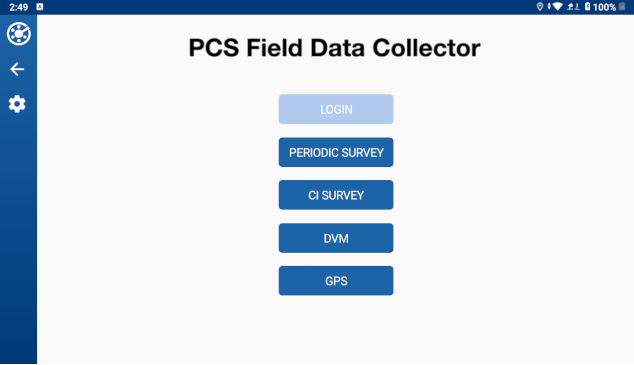
Settings Icon on Home Window
-
Tap
 CIS.
CIS.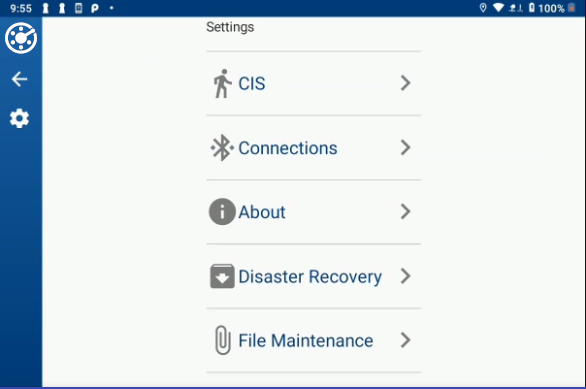
Settings Window
-
Under Voltage Level, enter a Voltage level in the text box. This voltage level sets the displayed line in the line graph. The value you enter here determines what is considered a valid or invalid reading. For example, if the voltage value is set to -0.85, then a reading more negative (for example, -0.86) is valid. If a reading is more positive than the entered voltage value (for example, -.84), the reading is invalid.
The voltage level you set here is used for the Beep when less negative than the set voltage level audio alert setting (next step).
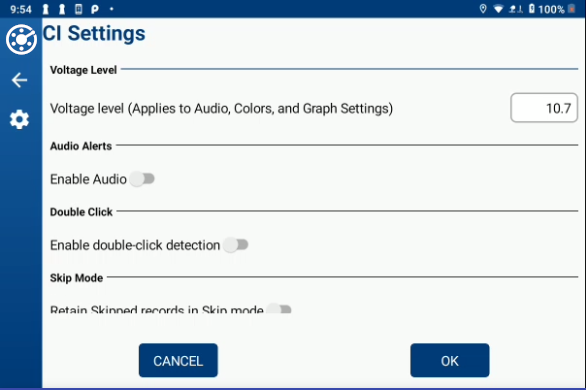
CI Settings - Voltage Level Setting
-
Under Audio Alerts, tap Enable Audio to have an audible alert sound when preforming readings.
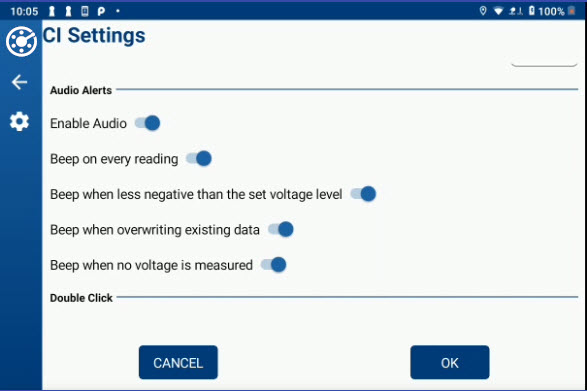
CI Settings - Audio Alerts
Select one or more of the actions that you would like to have an audio alert enabled from the list below Enable Audio:
-
Beep on every reading — every reading taken is accompanied by a sound.
-
Beep when less negative than the set voltage level — a sound is made when you take a reading that is less negative than the voltage level you set in the previous step.
-
Beep when overwriting existing data — a sound is made if you overwrite a reading.
-
Beep when no voltage is measured — a sound is made if a reading has no detectable voltage. This may occur if your leads are not plugged in or if there are other issues with contact when taking the reading.
If enabling audio alerts, also be sure to check that the volume of your device is loud enough for you to hear the sounds. Volume levels are set through your device's Sound settings.
-
Under Double Click, select Enable double-click detection to allow the option to set a flag by double-clicking the trigger on the data cane.
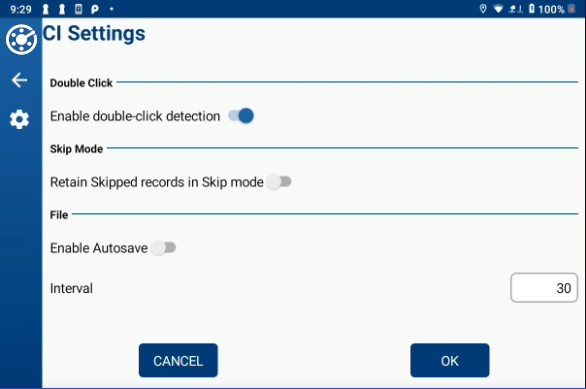
CI Settings - Double Click
-
Under Skip Mode, select Retain Skipped records in Skip mode to allow records to be kept while in Skip mode.
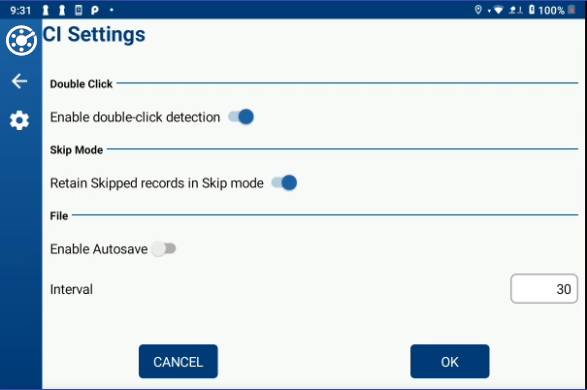
CI Settings - Skip Mode
-
If this option is enabled, the readings will continue to be recorded, but Skip will be added in the Remarks field.
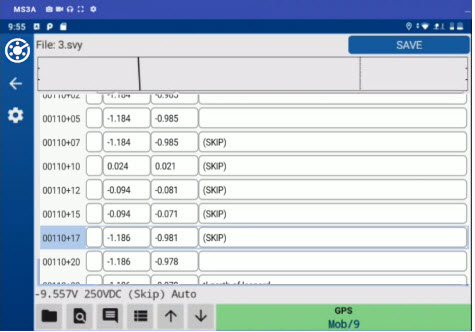
Fixed Increment Mode in Skip with Retain Skipped Records in Skip Mode Enabled
-
If this option is not enabled, records will not be kept while in Skip mode, and the readings list will skip recording until Skip mode is disabled. Skip will be added in the Remarks field for the reading when Skip was enabled and then in the reading when Skip mode is disabled.
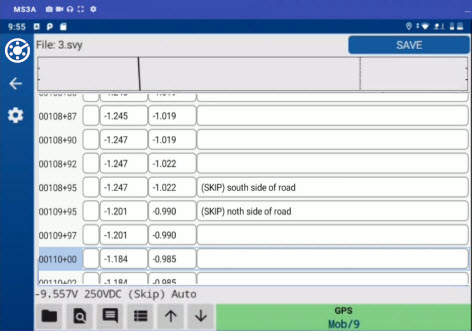
Fixed Increment Mode in Skip with Retain Skipped Records in Skip Mode Enabled
Refer to Fixed Increment Survey Skip and Lock Modes for more information about Skip and Lock modes.
-
-
Under File, select Enable Autosave to have the survey file automatically saved. Specify the time interval for the saves in the Interval text box (in seconds).
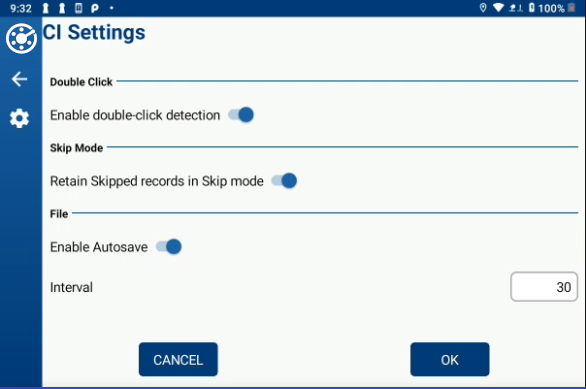
CI Settings - File
-
Under Color, select Enable Colors to enable the ability to change text colors. For each type of text, select the color desired. An example of what the text will look like after colors are applied are shown below the Enable Colors slider. The example updates whenever the color for the text is selected.
The following example is from the Mesa 3. Scroll down to see additional text options.
If you are in portrait mode on the Mesa 3, you will also have to scroll in the rows to see more colors.
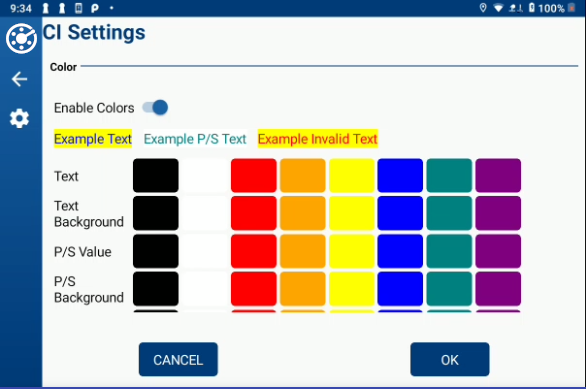
CI Settings - Color
The following example is from the Allegro AX. Each row can be scrolled either left or right to select a color. Scroll down to see additional text options.
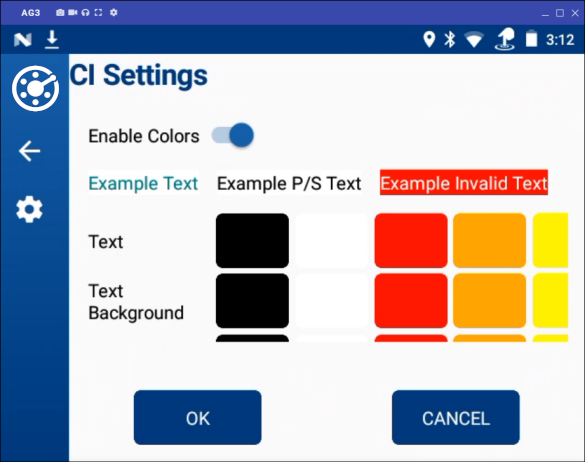
CI Settings - Enable Colors on Allegro AX
The following is an example of text and background colors applied, where text is colored purple with a yellow background, P/S readings are colored green with a white background, and invalid readings are red with a yellow background:
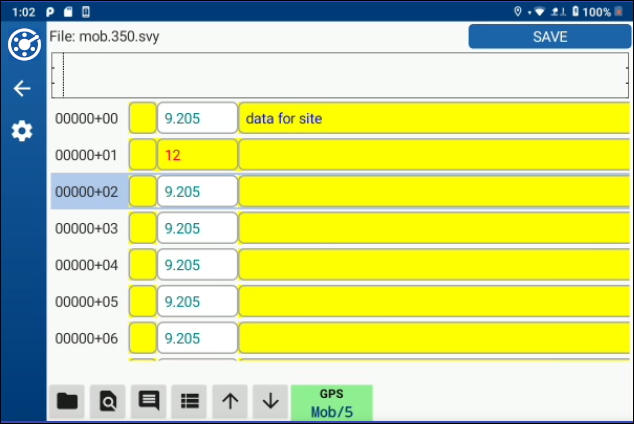
Text and Background Color Applied
-
Under Graph Settings, select Show Graph to enable the ability to show a graph on the CI main window.
You can also open the CI Settings window by tapping the graph within the CI Survey module if the graph is displayed.
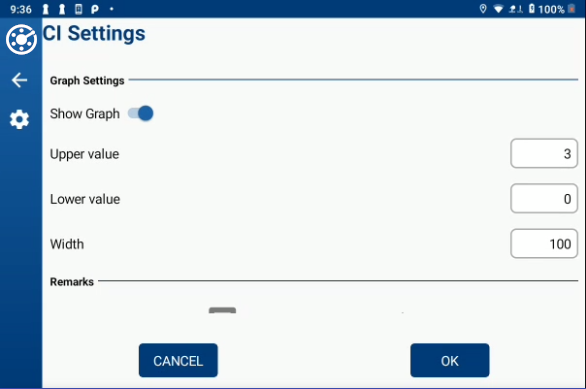
CI Settings - Graph Settings
-
Enter a value for the Upper value for the graph.
-
Enter a value for the Lower value for the graph.
-
Enter a value for the Width for the graph.
-
-
Under Remarks, tap
 Remarks to add to or change available remarks for survey records. The list shown in this window will be available while in the CI Survey module.
Remarks to add to or change available remarks for survey records. The list shown in this window will be available while in the CI Survey module. 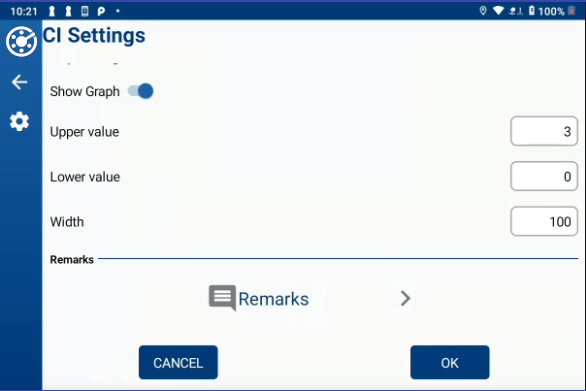
CI Settings - Remarks
In the Remarks window select from the available options.
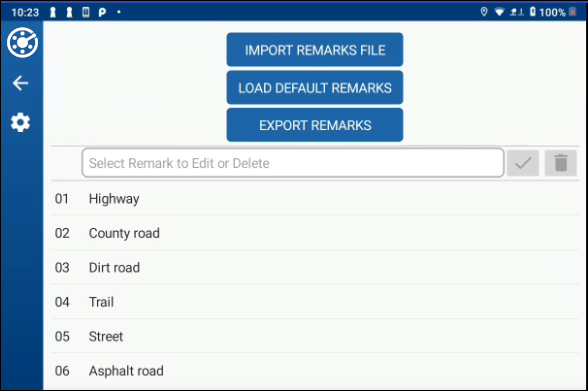
CI Settings - Remarks Options
-
Import Remarks File — overwrites any other imported remarks list. Tap Yes in the Confirmation window to begin.
The RemarkList.txt file that you create must be located in the CI folder on your device, which can be found at internal shared storage>Android>data>com.aiworldwide.aim>files>CI. Refer to RemarkList.txt File for more information.
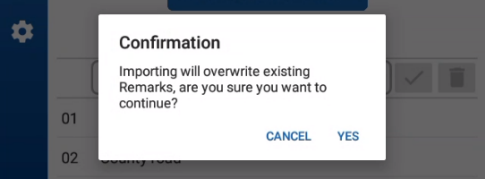
Import Remarks File Confirmation Window
-
Load Default Remarks — loads system default remarks for records. Tap Yes in the Confirmation window to begin.
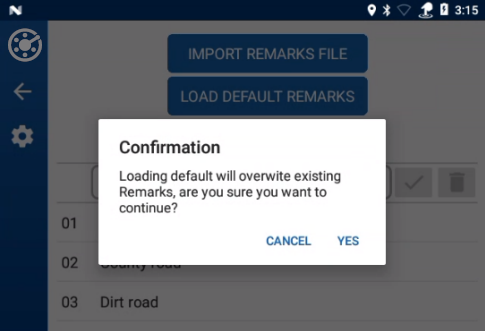
CI Settings - Remarks Loading Defaults
The defaults will populate in the window.

CI Settings - System Default Remarks
-
Export Remarks — if using an imported remarks file, export changes to this file.
-
Select Remark to Edit or Delete — tap on a Remark from the list to edit it or delete it. Tap
 to save it to the list, or tap
to save it to the list, or tap  to delete it.
to delete it.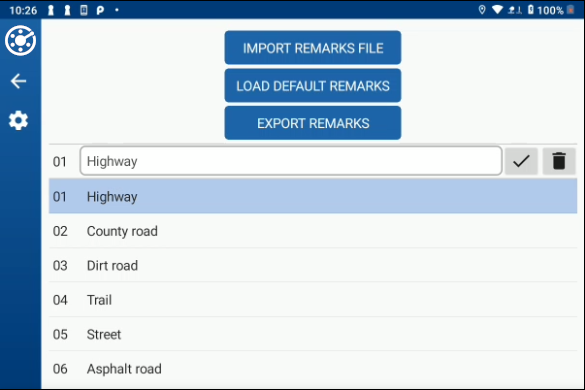
CI Settings - Edit or Delete Remark
-
If you accidentally delete a default Remark, tap Load Default Remarks to add it back.